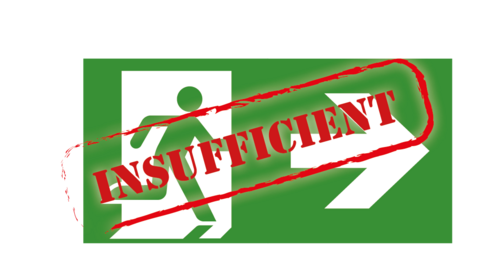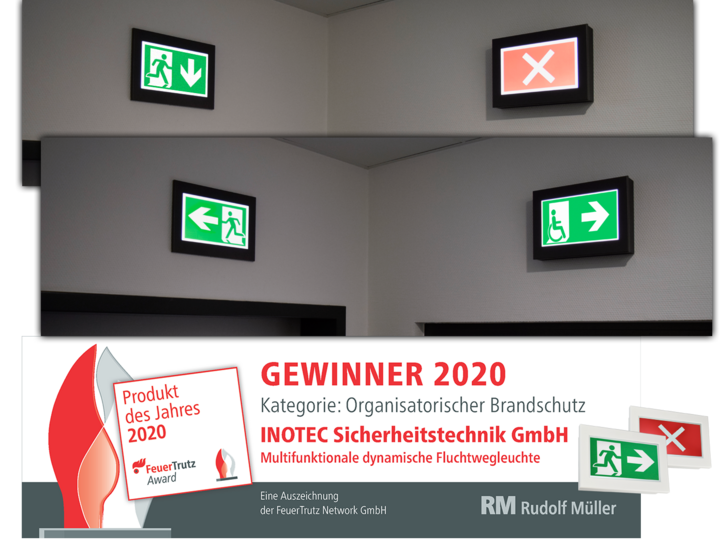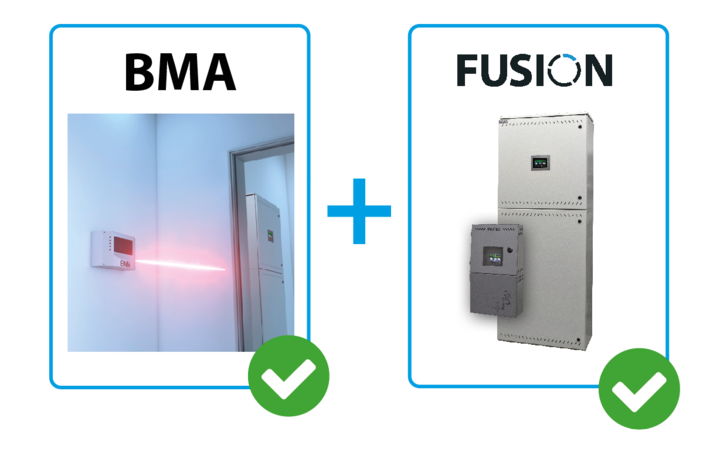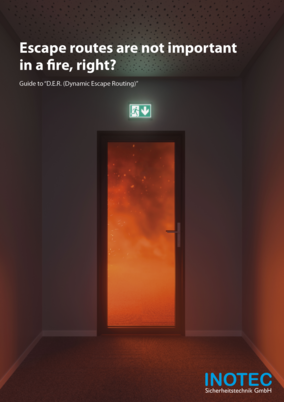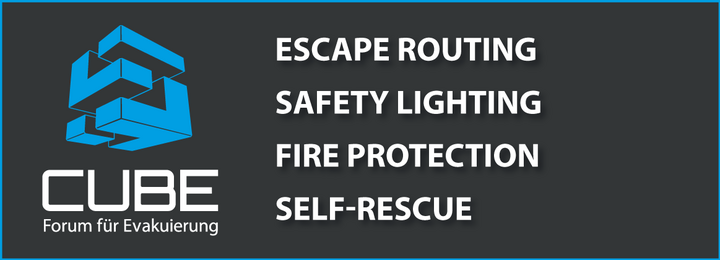when escape route lengths are exceeded,
Escape routes are not important in a fire, right?
It's time to walk on new paths
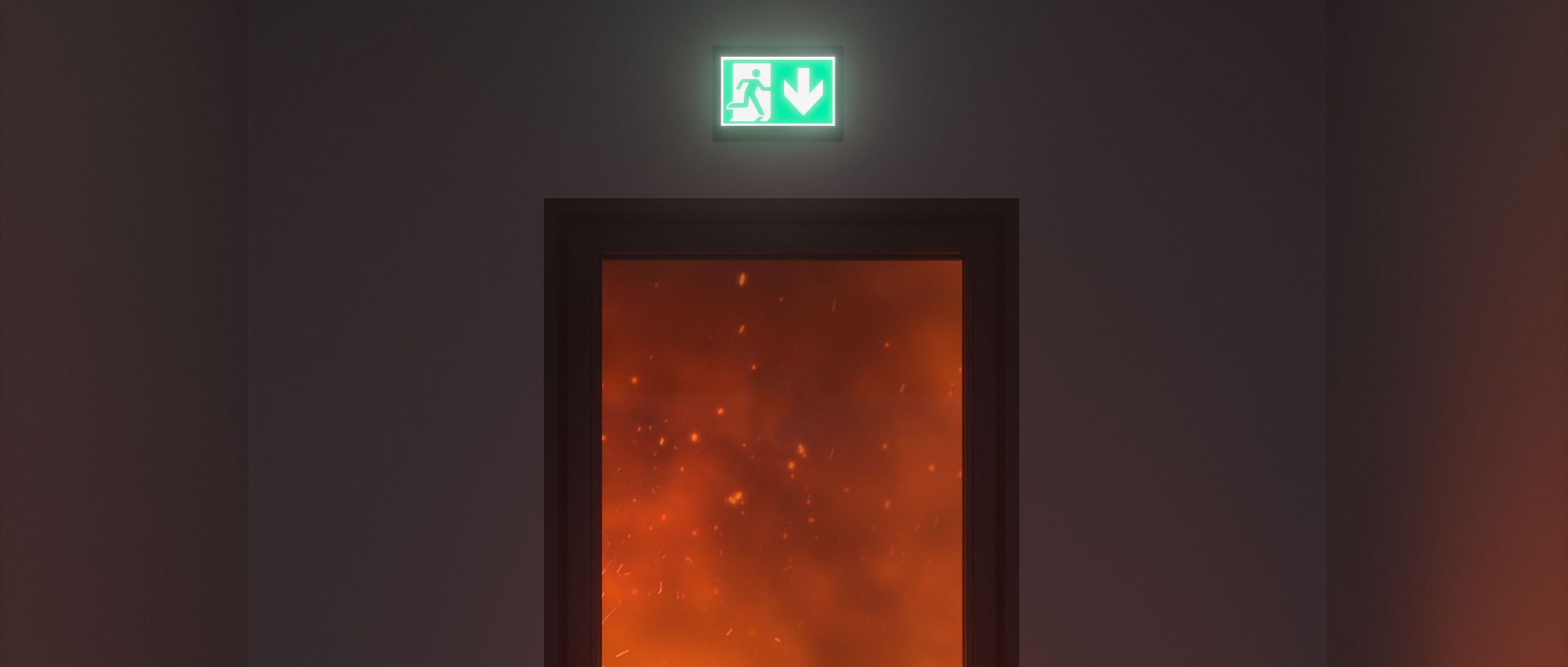
The classic escape route marking only takes into account the voltage failure
Conventional emergency and safety lighting is designed to illuminate escape routes during a power failure and to show the way out of a building with emergency exit luminaires and direction signs. It is covered by numerous standards and regulations. However, static emergency exit luminaires, which are normally mounted high on the walls, indicate just one predetermined escape route from every point in the building. The building code assumes that the shortest escape route is the most appropriate one and that it will remain accessible in an emergency. However, this is not always the case.
In a fire, escape routes can be blocked by smoke, fire or other hazards. Static emergency lighting cannot react to this danger and, in certain circumstances, may even direct the people being evacuated into an affected area. Even once the danger has been identified, people have difficulty orienting themselves to find an alternative escape route (disorientation). In addition, orientation and escape from the immediate danger zone is difficult when smoke makes it hard to see the statutory emergency exit luminaires mounted high on the walls.
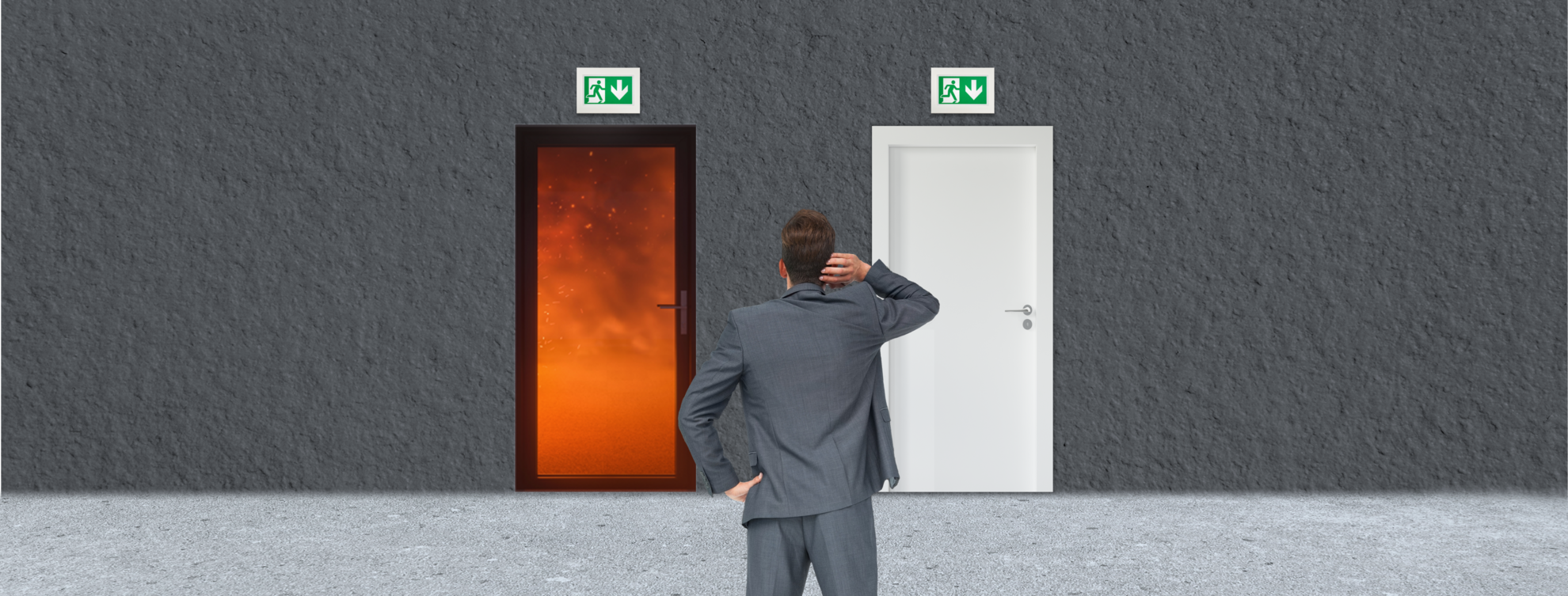
Is static escape route signage still appropriate today?
No, static escape route signage is no longer suitable for our times. But why is that? Over the recent years and decades, more and more attention has been paid to fire protection. Structural measures are required to prevent fires from spreading further, for instance, and technical measures are required to detect events early and automatically alert the rescue services. However, the escape route signage has remained completely unchanged by these improvements, and as a result it can even threaten lives! Today, most modern buildings are equipped with a fire alarm system.
It is time to try new routes!
The issue of self-rescue is a top priority in building regulations and occupational safety and health. An employer needs to ensure that his employees and visitors can escape to safety in the event of danger, in other words, that they can save themselves.
Static escape route signs cannot achieve this protection goal in many cases.
- It is time for the requirements of the building code and occupational safety to be finally implemented and for people to also be able save themselves in a fire.
- It is time for the focus to be on people and not on material assets.
- It is time to install state-of-the-art escape route signage in buildings.
- It is time that we face up to our responsibility and make the direction on escape route signage variable!
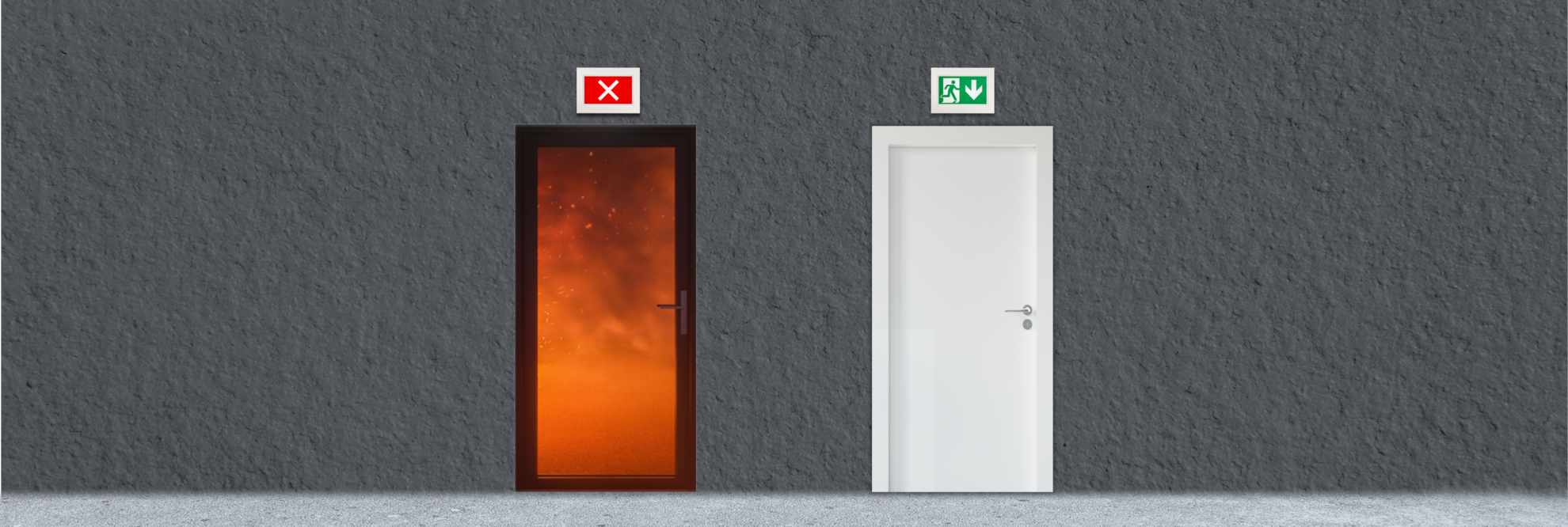
Static identification marking is a thing of the past. In the present, D.E.R. is designed with variable-direction escape route signage.
With a few exceptions, escape routes should generally be marked depending on the event. Especially in buildings with complex structures, a high proportion of people who are unfamiliar with the location and people with low mobility, it is particulary important to have clear and variable excape route signs.
The state of the art today includes dynamic escape routing, which uses the available information from a fire alarm system to guide people into the open or into secured areas. Modern safety lighting systems from INOTEC already include the function of dynamic escape routing as standard. With INOTEC systems, you can decide whether a static or a dynamic, directionally variable escape sign luminaire is to be used in the final circuit without any additional cabling costs compared to conventional safety lighting systems. If a building requires both emergency lighting and a fire alarm system (or other hazard detection systems), all the necessary technologies are available. They just need to communicate with each other.
A fire alarm system is mandatory in many buildings. Modern safety lighting systems such as the INOTEC emergency lighting units with FUSION technology can communicate with the alarm system. So the technology for a higher safety level is often available! Let's use it!
Who always takes the short escape route gets the short end of the stick! Dynamic escape routing can also be used as a compensatory method, e.g.
for open construction,
for (temporary) changes of use or
in landmarked buildings.
They can be used throughout a building or only in parts of it. Here, the use of individual dynamic escape sign luminaires can already significantly increase safety for building users and lead to considerable cost savings. The protective objective of emergency lighting should therefore not only be to illuminate and mark escape routes in the event of a power failure, but also to indicate the safe escape route in the event of a fire or hazard.
We have to talk!
To answer further questions and to deepen the topic, e.g. by means of project/application examples, we recommend our guide "Dynamic Escape Routing D.E.R.".
You can obtain the guide here:
Or come and visit us!
Would you like to ...
- experience and talk about realistic simulations of evacuation scenarios?
- See safety lighting with and without dynamic escape routing in practice?
- Draw conclusions for the creation of fire protection concepts?
- Check whether some regulations make sense?
- Discuss everything about evacuation and participate in events or seminars?
Then visit us at the CUBE. The Forum for Evacuation.
Get inital information at www.inot.ec/cube or feel free to contact us directly.
| Vanessa Holstein Veranstaltungsmanagement |
| vanessa.holstein(at)inotec-licht.de +49 2938 9730-409 |

